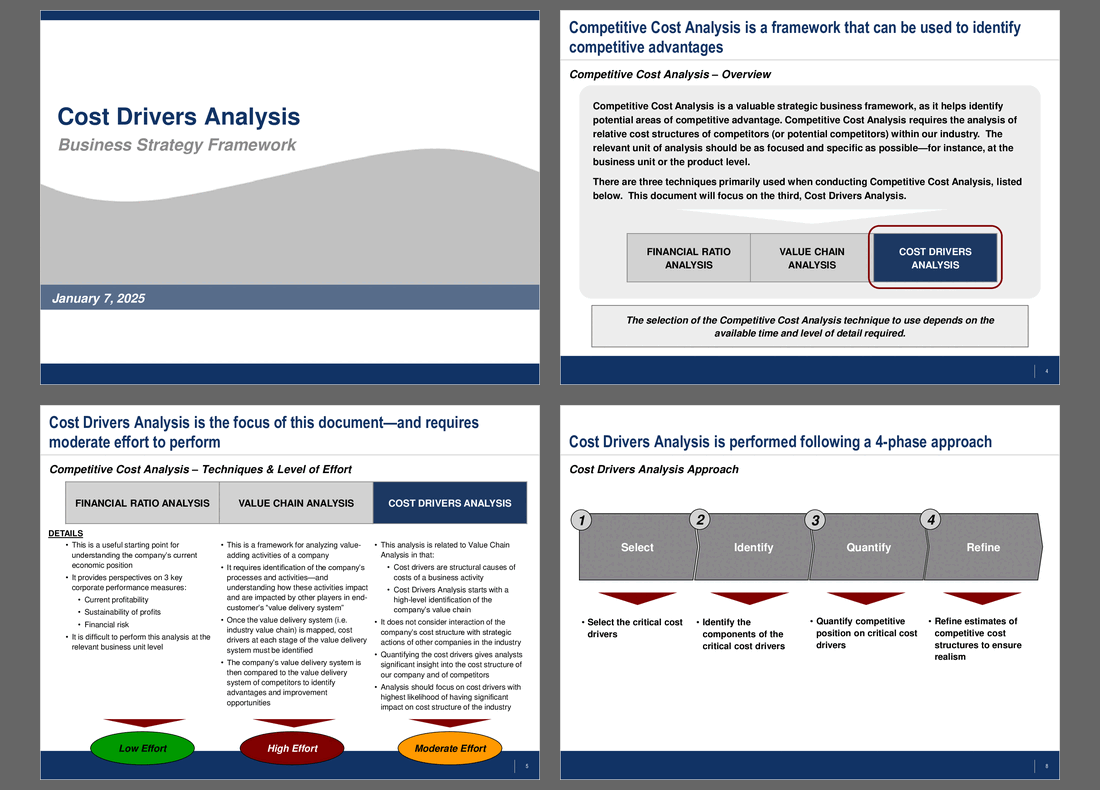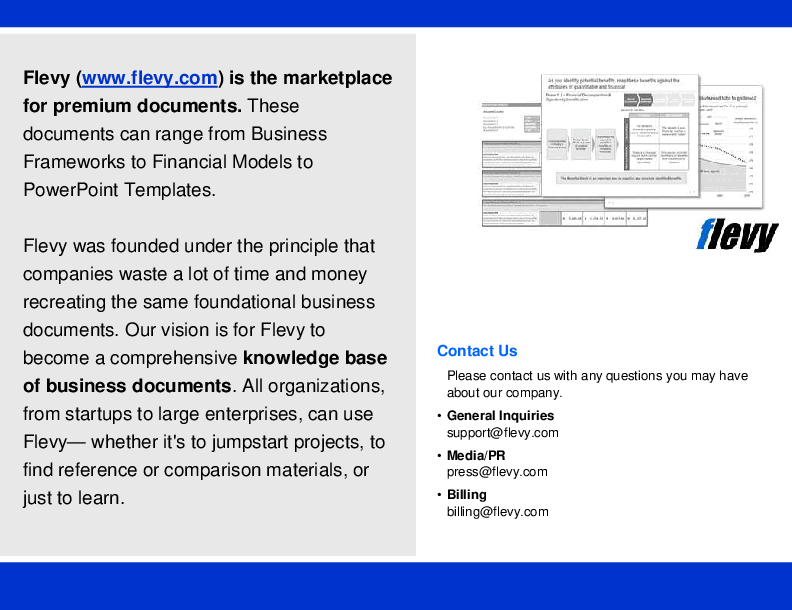Cost Drivers Analysis (PowerPoint PPT Slide Deck)
PowerPoint (PPT) 18 Slides
COST OPTIMIZATION PPT DESCRIPTION
Competitive Cost Analysis is a valuable strategic business framework, as it helps identify potential areas of competitive advantage. Competitive Cost Analysis requires the analysis of relative cost structures of competitors (or potential competitors) within our industry. The relevant unit of analysis should be as focused and specific as possible—for instance, at the business unit or the product level.
There are three techniques primarily used when conducting Competitive Cost Analysis: Financial Ratios Analysis, Value Chain Analysis, and Cost Drivers Analysis. This document will focus on Cost Drivers Analysis.
This document delves into the intricacies of Cost Drivers Analysis, offering a structured approach divided into distinct phases. Phase 1 emphasizes the necessity of Activity Based Costing to accurately allocate costs to value activities within the company's value chain. This phase underscores the importance of focusing solely on costs related to the products or services under analysis, ensuring that extraneous costs are excluded. The document highlights the need for data from Corporate Finance and knowledge of industry-leading practices to list primary cost drivers for each business activity.
Phase 2 focuses on identifying the components of critical cost drivers, breaking them down into price and quantity elements. For instance, the "product complexity" cost driver includes raw materials, labor costs, and sourcing costs, while the "technology" cost driver encompasses equipment costs, maintenance costs, and R&D costs. This phase stresses the importance of considering the level of detail and effort required, advocating for ranking competitors on critical cost drivers rather than quantifying each competitor's cost position exhaustively.
The document also covers the review of cost drivers with a significant impact on the company's cost structure for potential structural differences among competitors. This involves determining if these differences could result in a competitive advantage and may require consultation with third-party experts. The analysis aims to uncover true competitive advantages or disadvantages by examining potential structural differences in scale, learning, technology, and product complexity among competitors.
Got a question about the product? Email us at support@flevy.com or ask the author directly by using the "Ask the Author a Question" form. If you cannot view the preview above this document description, go here to view the large preview instead.
Source: Best Practices in Cost Optimization PowerPoint Slides: Cost Drivers Analysis PowerPoint (PPT) Presentation Slide Deck, LearnPPT Consulting
COST OPTIMIZATION PPT SLIDES
This document is available as part of the following discounted bundle(s):
Save %!
Competitive and Company Cost Analysis
This bundle contains 5 total documents. See all the documents to the right.









